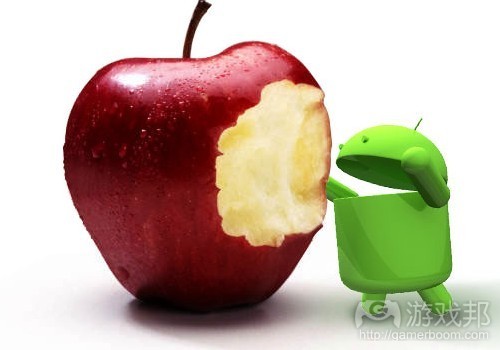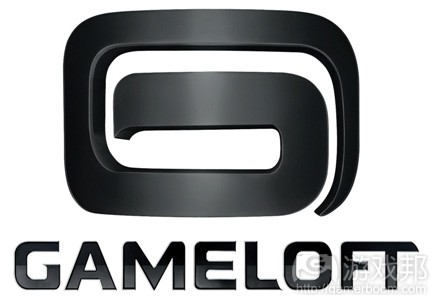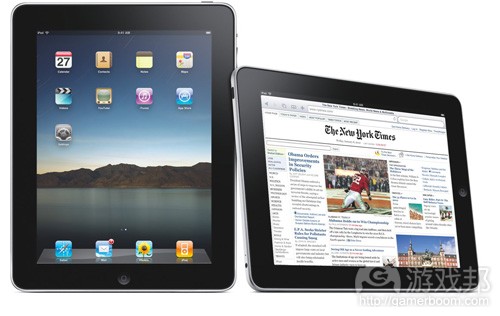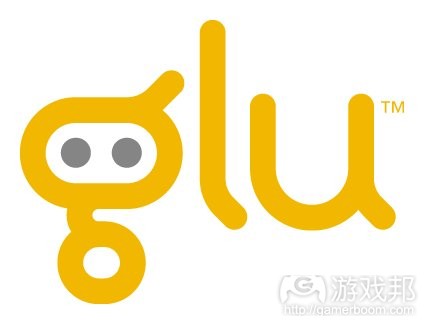每日观察:关注iPhone游戏《Pupy World》收益(8.2)
1)Rovio日前宣布《愤怒的小鸟》全球下载量已超3亿次,并称准备于2011年底前在中国展开市场营销活动,在中国实现1亿次下载量(中国已成为该游戏品牌第二大市场)。
Rovio将面向中国市场推出本土化版本《愤怒的小鸟》,其中包括将于九月份发布的中秋节版本。Rovio目前已和PPW公司达成授权合作协议,并与亿动广告传媒联手推广《愤怒的小鸟》,未来还将与更多中国企业结成合作伙伴关系。该公司还通过乐淘网发售以该游戏为主题的鞋子。
2)Canalys最新报告指出,Android已占据全球智能手机市场的半壁江山,其份额达48%。在上一季度,全球手机市场规模同比去年增长了73%,智能手机出货量达1.07亿部。Canalys调查追踪了56个国家的情况,发现有Android已成35个国家的智能手机平台之王。
苹果iOS在全球手机市场中仅占19%份额,但如果从实际收益来看,苹果公司已是富可敌国,其现金持有量已超过美国政府,谷歌明显不是同一层次的竞争对手。
三星成为头号Android移动设备厂商,在上一季度的智能手机出货量仅次于苹果。
3)PricewaterhouseCoopers最近报告表明,电子游戏已成为澳大利亚传媒娱乐市场发展最快的领域,预计到2015年该国电子游戏市场规模平均年增长率将达9.5%(游戏邦注:领先于全球电子游戏市场的8.2%年均增长率),全年收益将达到25亿澳元(约合27.3亿美元);澳大利亚游戏市场今年增幅将达10.7%,总收益为18亿澳元。
澳大利亚用户目前在游戏产品中的投入,已占所有传媒娱乐消费品的8.8%,预计到2015年这一比例将上升至11.4%。
到2015年,平板电脑在澳大利亚销量将超过500万部,或将成为澳大利亚用户下载新闻、电影、音乐、电视和游戏的主要设备。
4)法国手机游戏发行商Gameloft日前公布2011年上半年(截止6月30日),指出该时期公司合并销售额达7680万欧元(约合1.1亿美元),同比去上增长15%;如果不计汇率,其销售额增幅应为17%。
该公司在今年第二季度的销售额是3740万欧元(约合5340万美元),同比去年增长11%,但比上一季度下滑5%(游戏邦注:Gameloft在去年第二季度的销售额高于第一季度)。
在Gameloft的季度销售额中,欧洲市场占据33%份额,北美占28%(比上一季度流失1%),世界其他地区占39%(上升1个百分点)。
与之形成对比的是EA Mobile,该公司同期销售额为5700万美元,同比去年上升9%。预计EA收购PopCap将为其手机业务再添3000万美元销售额,并在将来与Gameloft的角力中占据优势。
在Gameloft上半年销售额中,智能手机及平板电脑业务同比去年增长55%,占总销售额的30%。该公司在去年曾表示,苹果App Store业务占其销售额的21%。
5)IHS iSuppli最新报告预测,2011年全球移动宽带网络设备出货量将达1.579亿部,比去年增长57.8%(游戏邦注:这里的移动宽带网络设备是指平板电脑、3G上网本、笔记本和电子阅读器),到2015年这些设备的出货量将达3.507亿部。
平板电脑市场行情最乐观,预计今年出货量将达5890万部,同比去年增长239.3%,苹果iPad是最畅销平板电脑。
iSuppli调查美国平板电脑用户发现,iPad是支持率最高的平板电脑设备,不少受访者称愿意向朋友推荐该设备,平均得分为8.8(满分为10分)。另一个意外的结果是,中国厂商推出的卓尼斯平板电脑居然排名第二(游戏邦注:iSuppli承认其调查用户样本比较有限),第三名是三星平板电脑(平均得分是8.5),其后是Archos(平均得分为8.4)与摩托罗拉(平均得分为8.4)。
6)手机游戏公司Glu Mobile近日与中国传媒公司TOM集团合作,将于今年第四季度在中国市场推出以社交游戏为主的应用商店glu.cn,锁定智能手机及平板电脑游戏用户。Glu Mobile将利用TOM集团跨平台云技术服务及其电子商务基础设施挖掘中国市场潜力(游戏邦注:Glu Mobile在2007年收购中国开发商MIG,据称收购价为4000万美元,从那时起Glu就已正式进军中国市场)。
7)在线游戏网站OMGPOP不久前推出了其首款iPhone游戏《Pupy World》,该游戏仅发布两周下载量就已将近100万次,并顺利跻身免费游戏前100强和游戏营收前100强榜单(该游戏支持玩家以99美分起价,购买其中的虚拟商品)。
该公司首席执行官Dan Porter表示,四分之一(约25万)的游戏下载用户属于每日活跃用户,有三分之二属于付费用户,还有94%用户下载后至少访问游戏一次。目前为止,活跃用户每天平均投入虚拟商品的消费额是8美分(有些高消费用户甚至购买50美元以上的虚拟货币),该游戏现在每天收益约为2万美元。
该游戏下载量主要来自omgpop.com和Facebook应用的交叉推广渠道(其比例占20%),付费广告(约占20%),iTunes榜单的免费曝光和病毒传播分享渠道(占60%),Porter称公司每付费获取一名用户,就可以再免费得到6名用户。
Porter表示这款戏在iPhone 4上的运行效果最佳(其收益也主要来自iPhone 4用户),刚发布时收获了许多5分评价,但后来有不少用户用旧版iPhone下载这款游戏,导致游戏运行故障不断,因此也获得了不少1星的差评。(本文为游戏邦/gamerboom.com编译,如需转载请联系:游戏邦)
1)Angry Birds soars into China as franchise tops 300m global downloads
by Stuart Dredge
Rovio hoping for 100m in China alone this year.
Angry Birds has now passed the 300 million global downloads milestone, but developer Rovio Mobile is now setting its sights on China.
The company has announced that it’s setting up corporate and marketing operations there, with the aim of generating 100 million downloads from China by the end of 2011. The country is already the second biggest market for the feathery franchise.
Rovio will release localised versions of Angry Birds games, including a Moon Festival episode for its Angry Birds Seasons title in September for the Chinese mid-Autumn festival. However, the new episode will also be available elsewhere in the world.
“As we have done in all of our markets around the world, we will create products specifically for this market,” says chief marketing officer Peter Vesterbacka. “Angry Birds will recognize the uniqueness of China and our Chinese fans.”
Rovio is working with local partners: PPW for licensing and mobile advertising network Madhouse, with more to follow. The company is also starting to sell a range of Angry Birds-branded shoes through online footwear retailer Letao.(source:mobile-ent)
2)Android Takeover: Google’s mobile OS now almost 50% of the global smartphone market
By: Blake Stimac
Another day, another report saying Android is taking over the world. For good or for worse, Google’s mobile operating system has set the world on fire and has matched and outgrown the competition in a very short amount of time. According to the latest report from Canalys, Android has capture almost half of the global smartphone market, with a total of 48%.
In the past quarter, the global market had grown 73% year over year, shipping around 107 million handset in the time. Canalys tracks a total of 56 countries for its reports, and of those 56, 35 of the countries have Android in the top spot, retaining its throne it gained in the 4th quarter of 2010.
Android insane growth leaves iOS in the dust, which holds a 19% share of the global market. Of course, Apple is the world’s leading smartphone vendor, and even has more cash than the government. Maybe Jobs can start paying himself more than a dollar now (that’s some smart, but evil shit right there). Either way, the half-eaten fruity company can’t slow the Android OS and even the introduction of the iPhone 5 likely won’t bring Apple to the market share of Android. However if we’re talking cash money, there’s no contest.
While it was once was HTC and Motorola that were held in highest regard when it came to Android, by now you must have noticed that the crown had been handed to Samsung. With its popular Galaxy S line and Galaxy S 2 line set to hit the US later this month, Samsung’s latest flagship device should sell likely like hotcakes, in the wake of the iPhone 5 or not. With the best Android handset family and the only viable Android tablet around, the mobile battle becomes less of an Android vs iOS battle but one of Samsung vs Apple, which has been pretty heated over the past few months as it is.
Samsung was the top Android vendor and second only to Apple when it came to smartphone shipments last quarter. Whether you’re looking to grab the iPhone 5 or Galaxy S 2 this quarter, the competition has never been better and you really can’t lose with either one. That said, if you’re opting for the Galaxy S 2, you may want to know that the next-gen Nexus device could be right around the corner and could put both aforementioned devices to shame. Maybe.(source:intomobile)
3)Report: Video Games To Drive Entertainment Growth In Australia
by Kyle Orland
Video games are set to be the fastest growing segment of a growing Australian media and entertainment market over the next five years, according to a new report from PricewaterhouseCoopers.
StartupSmart reports that the PwC analysts predict an average annual growth rate of 9.5 percent in the Australian video game market through 2015, when that market will represent AU$2.5 billion ($2.73 billion) in annual revenues.
That growth is ahead of a predicted global annual growth rate of 8.2 percent for the video game market, and includes a 10.7 percent increase for the Australian game market this year, to AU$1.8 billion in revenue.
The gaming sector’s predicted growth leads all subcategories in a media and entertainment sector that PWC expects to grow at 4.1 percent annually to AU$37.2 billion ($1.97 billion) in spending in 2015.
By that point, gaming will account for 11.4 percent of all consumer spending on media and entertainment in Australia, up from 8.8 percent today, the report says.
Tablet computer sales will also be a growth driver, with 3 million Australians buying over 5 million of the devices by 2015. PwC predicts tablets will be the dominant device for downloading news, films, music, TV and games in the country by that time, according to an AdNews article on PwC’s report.(source:gamasutra)
4)With a third of sales coming from smartphones and tablets, Gameloft sees H1 2011 sales up 15% to $110 million
by Jon Jordan
Mobile publisher Gameloft (GFT.PA) has announced its financial figures for the first half of 2011, the six months ending 30 June.
Consolidated sales were €76.8 million ($110 million), up 15 percent year-on-year. Stripping out differences in currency rates between the two periods, sales would have been up 17 percent.
Key numbers
During the three months ending 30 June, quarterly sales were €37.4 million ($53.4 million), up 11 percent year-on-year, but down 5 percent quarter-on-quarter. In 2010, Gameloft’s Q2 sales were larger than its Q1 sales.
Europe represented 33 percent of the company’s quarterly sales, North America down 1 percent quarter-on-quarter to 28 percent and the rest of the world up 1 percent to 39 percent.
In comparison, rival EA Mobile announced quarterly sales for the same period of $57 million, up 9 percent year-on-year.
The ratio between the two companies’ sale was 0.94, the highest it’s been for three quarters, although EA’s purchase of PopCap will add $30 million annually to its mobile sales, boosting it well ahead of Gameloft in such future comparisons.
Don’t ask, don’t tell
As in previous years, Gameloft was non specific about the reasons for its growth, merely pointing to sales in emerging countries and its “massive success” with respect to smartphones and tablets.
Gameloft’s first half sales in this part of the business grew by 55 percent year-on-year, representing 30 percent of total sales.
A year ago, it said the Apple App Store consisted of 21 percent of sales.
It expects to release a further 20 games for smartphones and tablets in the second half of 2011, enabling solid growth.
In keeping with French accounting practices, Gameloft won’t release earning details until its consolidated results are announced on August 31.(source:pocketgamer)
5)157.9m mobile broadband devices to ship this year says IHS iSuppli
by Stuart Dredge
Tablets driving the growth, with iPad to the fore.
Shipments of mobile broadband devices will grow by 57.8% to 157.9 million units in 2011, according to the latest report from IHS iSuppli.
That’s not mobile phones, but every other connected device, including tablets, 3G-equipped notebook and netbooks and e-readers. By 2015, iSuppli thinks the category will see 350.7 million units shipped.
What’s driving this growth? Tablets are the key ingredient according to the report, which predicts 58.9 million shipments in 2011, up 239.3% year-on-year.
“More than any wireless device, media tablets – exemplified by the best-selling iPad from Apple Inc – appear to be at the forefront in boosting mobile broadband,” says principal analyst Francis Sideco.
iSuppli has also been asking US tablet owners what they think of their devices, and specifically whether they would recommend them to friends, using a scale of 0 (they wouldn’t) through 5 (neutral) to 10 (very likely to recommend it).
iPad comes top of the resulting chart, with an average score of 8.8. It’s followed by a surprise – Chinese company Zenithink’s tablets – although iSuppli admits this is based on a “comparatively small” sample of users. Tablets by Samsung (8.5), Archos (8.4) and Motorola (8.4) are next in line.(source:mobile-ent)
6)Glu partners with TOM Group to launch glu.cn as key Chinese smartphone community portal
by Keith Andrew
One way or another, the lure of the Chinese market is playing an increasing role in the expansion plans of all companies.
The announcement of a new storefront specifically aimed at the Chinese audience by Glu Mobile follows Rovio’s revelation that it intends to launch Angry Birds in the region as part of its 1 billion fans plan.
Android’s continued success in China has also resulted in a determined effort by PapayaMobile to export titles from the US and Europe into the market through its Gateway to China program.
Moving market
Whatever the fundamentals, each move is designed to accomplish the same thing: tap up the growing number of smartphone consumers across China.
Glu’s effort comes about as a result of a partnership with Chinese media firm TOM Group.
The storefront, which is set to launch with a social gaming focus, will utilise TOM’s expertise in the cloud, as well as its e-commerce infrastructure.
“This partnership with TOM Group is a significant step in our global strategy and will accelerate our smartphone growth in China,” said Glu president and CEO Niccolo de Masi.
“glu.cn is scheduled to launch in Q4 2011 and we believe it will become quickly recognised by the Chinese gaming community as the leading destination for high quality smartphone and tablet games.”
Deep foundations
“The collaboration marks a key milestone for TOM Group in unlocking the value of its cloud-based cross-device open platform,” added Ken Yeung, TOM’s CEO.
“It also evidences the materialisation of our strategy to become a landing platform for our international partners to localize their technology and applications and tap into the Chinese market.”
Since its acquisition of Chinese developer MIG in 2007 (albeit for a pricey $40 million which took over three years to pay off), Glu has had a presence in the market; something it’s sure to leverage with this deal. (source:pocketgamer)
7)What OMGPOP Learned From One Million Downloads of Puppy Love
Erick Schonfeld
It is true. Everyone loves puppies. Online gaming site OMGPOP wisely chose Puppy World to be its first iPhone game. In the mobile game, you take care of puppies, give them to children and increase the happiness in the world. In the two weeks since launch, the game has been downloaded almost one million times already, and is among both the top 100 free Games and top 100 grossing Games (players can by bones and other virtual items for 99 cents and up).
Beyond these vanity metrics, OMGPOP CEO Dan Porter offers the following stats. A quarter of the people who have downloaded the app, or 250,000, are daily active users. Two thirds of those are actually playing the game versus signing up. (A very high 94 percent of people who download the app actually open it up at least once). And so far the company is seeing active users spend an average of about 8 cents a day on virtual goods (amortized across all users, with some power users spending more than $50 on currency packs which can be traded in for better puppies, room decorations, and dog beds. The game is already making about $20,000 per day.
In terms of where all of these downloads are coming from, it is a combination of cross promotion on omgpop.com and its Facebook apps (20 percent), paid advertising (20 percent), and free exposure via iTunes charts and viral sharing (60 percent). “For every user we pay to acquire we are seeing 6 more users for free,” says Porter.
What was his biggest mistake? “If we had to do it all over again, we would have only supported iPhone 4,” he says. The game plays best on the iPhone 4 because it takes advantage of all the hardware to render those cute puppies, but as it became more popular people with older phones started downloading it also. Initially, it got hundreds of 5-star reviews, but then started accumulating lots of 1-star reviews as the game crashed older iPhones. Once you launch your app, you have to keep supporting the same devices you started out with, and iPhone 4 users make the most money for OMGPOP anyway.(source:techcrunch)













































 闽公网安备35020302001549号
闽公网安备35020302001549号